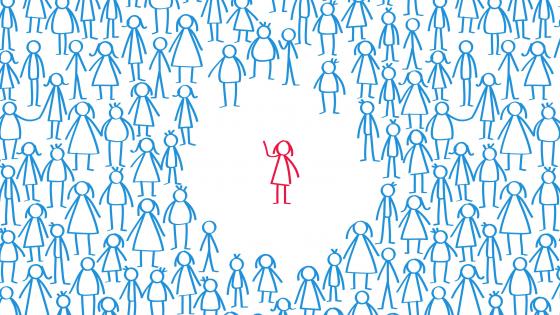What ails economics? Despite its dominant role in framing and guiding policy analysis and discourse, or perhaps because of it, there has been a spate of critiques of mainstream, neoclassical economics in the last few years. An illustrative collection would include Chang (2014), Rodrik (2015), Mazzucato (2018), Raworth (2018), and Skidelsky (2020), the last of which actually has the title “What’s wrong with economics?”
The list of criticisms ranges from within the economic realm (for example, the tendency to assume competitive markets with no externalities), through the psychological (the tendency to assume far-sightedness and a particular definition of rationality), to the social (purely self-interested behaviour in exercising economic choices), and beyond (neglect of inequality considerations and of planetary constraints to aggregate economic activity).
And yet, many of these criticisms are recognised and analysed at the frontiers of economics as a discipline. Indeed, Nobel prizes have been awarded to those who have led the departures from the mainstream, including George Akerlof, Abhijit Banerjee, Angus Deaton, Esther Duflo, Michael Kremer, William Nordhaus, Elinor Ostrom, Amartya Sen, Robert Shiller, Michael Spence, Joseph Stiglitz, Richard Thaler, and so on. The leading journals are replete with many specific models which extend conventional economics in the directions of these criticisms. And research reported in Vox columns takes up many of these issues as well – to take some recent examples, see Aksoy et al. (2021), Benmir et al. (2021), Esposito et al. (2021), Bussolo et al. (2020), and Woloszko and Causa (2020).
What explains the paradox of a literature full of models which address the criticisms, with Nobel prizes at the pinnacle of these exercises, coinciding with the general perception that there is something seriously wrong with economics, that it is too narrow in its focus? Why, when the leaders of the field embrace departures from the mainstream, does the mainstream remain the centre of gravity for the economics profession as a whole?
Our recent research explores the idea that while there is a core general model which underpins the mainstream – namely, the Arrow-Debreu model of general economic equilibrium with its associated fundamental theorems of welfare economics – there is no comparable general model of socioeconomic equilibrium and associated analysis of efficiency and equity which can underpin an alternative perspective. The departures from the mainstream are exactly that – departures from a standard model, with each of the moves considered in isolation.
We propose something new, namely, that the base model should include not just the economy, but the socioeconomic system. The economy is to be viewed as embedded within society. In this light, efficiency and equity receive new meaning, since now they refer to the union of all economic and social interactions. Without such an alternative society–economy model at an analogous level of generality and abstraction as the Arrow-Debreu model for the economy, the mainstream will continue to remain dominant.
Our basic model (Fleurbaey et al. 2021) is one in which agents get utility from economic commodities (let us say barbecues) in the usual way, as well as from what we term social outcomes (let us say pleasurable conversations). Economic commodities are traded in conventional competitive markets. Social outcomes, on the other hand, are produced through social interactions. Individuals choose strategies (how much time to offer for conversation), and the interplay between these strategies lead to the social outcomes. There is essential interaction between the economic and social worlds. Social outcomes influence the utility from consumption of economic commodities, and vice versa. Economic inputs can be essential to social strategies and outcomes, which can in turn affect economic activity.
The concept of equilibrium in this integrated society–economy model combines the requirements of economic and social equilibria. Each individual chooses consumption of economic commodities and social strategies to maximise utility subject to feasibility constraints, taking prices and the strategies of other agents as given. On the economic side, prices clear each commodity market. On the social side, strategies are compatible with each other in the sense that no individual would wish to change their strategies given the strategies of all others.
The resulting model is sufficiently general to encompass a wide range of specific models in the literature. But its generality and abstraction highlights, ‘from 30,000 feet’, a number of key issues.
We define efficiency in the usual way, as a state of affairs where no feasible reallocation of individual actions can make one person better off without making anyone else worse off. Narrow economic efficiency is defined in the same way, conditioned on social outcomes; and narrow social efficiency is also defined similarly, conditioned on economic outcomes. We show that narrow economic and social efficiency taken separately are necessary but not sufficient for overall efficiency.
Much of the literature based on specific models focuses on the inefficiencies that can arise through social interactions, and through their spillovers to the economic arena. Our integrated model frames many of these specific exercises. But it also highlights a crucial issue that is revealed only at this level of generality. Even if all coordination problems within the economic world can be solved, and even if all coordination problems within the social world can be solved, this still leaves open the fundamental requirement of coordinating across the economic and social worlds.
We argue that this condition is both important and difficult to fulfil, since the commodification needed for the price mechanism to operate would undermine the essential nature of many social relations that are based on authentic feelings and deferred reciprocity, if not outright disinterested motivations. At the same time, many coordination mechanisms of the social sphere (social norms, tacit reciprocity, or centralised coordination) are usually not designed for such a task. This means that if social interactions were not suitably designed, then the socio-economy is probably condemned to suffer from inefficiencies which are neither due to market failures nor inefficient social interactions, but come from the lack of coordination across the two spheres. This is unless, as we show, tacit coordination occurs through altered social norms regarding social interactions.
Many social arrangements develop to address coordination failures on the economic side and without these, markets would not function as well as they do. In particular, the efficiency properties Adam Smith’s invisible hand are due not merely to the ability of economic agents to engage in voluntary transactions under perfectly competitive conditions, but also to the social interactions that obviate many of the inefficiencies that arise from the prevalence of externalities in most markets. These issues emerge naturally, and are framed sharply, in our integrated society-economy model.
On equity, the integrated society–economy model perspective also encompasses many specific themes in the literature such as the interplay between economic inequality and efficiency, but it also takes us well beyond the conventional economic resource allocation-based perspective on inequality. There is of course a vast literature on the conceptualisation and measurement of economic inequality. But the essential embedding of the economy into a social framework raises three important questions which have not been raised as sharply in the economics literature before. First, how do we conceptualise and measure social inequality? Second, comparing across socio-economic equilibria, what is the relationship between economic inequality and social inequality? Third, how do we think about overall inequality that combines social and economic inequality?
In Fleurbaey et al. (2021) we make a start in answering these questions, but the point is to first pose them, and that can only happen in an integrated society–economy framework. In such a model, one can study how to take account of individual preferences about combinations of economic affluence and social status, devise ways to disentangle the contribution of the economy and of other social relations to the combined socioeconomic inequality, and understand how certain transactions in which money is traded for social inferiority (as in subordinate labour) are a mixed blessing for those they lift from poverty and ascribe to a dependent social status at the same time.
Karl Polanyi argued that the economy is ‘submerged’ in social relationships. Yet the grand project of the economics discipline, as we teach it to our students, appears to have been to disconnect economy and society. What is wrong with economics, then, is that despite myriad specific attempts to broaden the perspective, the core general model is still too narrow. And it is this general model which exerts the dominant gravitational pull, including when economics is deployed in policy discourse.
Our programme of research makes a start in the direction of an alternative versatile general model and conceptual toolkit which can provide a useful umbrella to encapsulate many aspects uncovered in the economic literature on social interactions. The stylised joint depiction of economy and society helps in fleshing out how economic activities are part of a broader social setting and why they should not, in general, be studied separately. It retains the ability to highlight the power of the market mechanism, while embedding it in society. Ideally, a model such as this one should replace the canonical models that shape how people, and especially experts and policymakers, view the economy and its rules.
References
Aksoy, C G, A Cabrales, M Dolls, R Durante and L Windsteiger (2021), “The effect of calamities and shared identity on altruism and reciprocity”, VoxEU.org, 13 June.
Benmir, G, I Jaccard and G Vermandel (2021), “A time-varying carbon tax to protect the environment while safeguarding the economy”, VoXEU.org, 20 August.
Bussolo, M, F de Nicola, U Panizza and R Varghese (2020), “Political connections, privileged access to credit, and welfare costs”, VoxEU.org, 28 February.
Esposito, E, T Rotesi, A Saia and M Thoenig (2021), “Memory and reconciliation: The dangers of common enemy narratives”, VoxEU.org, 23 May.
Chang, H-J (2014), Economics: The User Guide, Penguin.
Fleurbaey, M, R Kanbur and D Snower (2021), “Efficiency and Equity in a society-economic integrated model”, CEPR Discussion Paper no. 16446.
Mazzucato, M (2018), The Value of Everything, Penguin.
Raworth, K (2018), Doughnut Economics: Seven Ways to Think Like a 21st-Century Economist, Random House.
Rodrik, D (2015), Economics Rules: The Rights and Wrongs of the Dismal Science, W.W. Norton.
Skidelsky, R (2020), What’s Wrong with Economics? A Primer for the Perplexed, Yale University Press.
Woloszko, N and O Causa (2020), “Housing and wealth inequality: A story of policy trade-offs”, VoxEU.org, 31 March.






